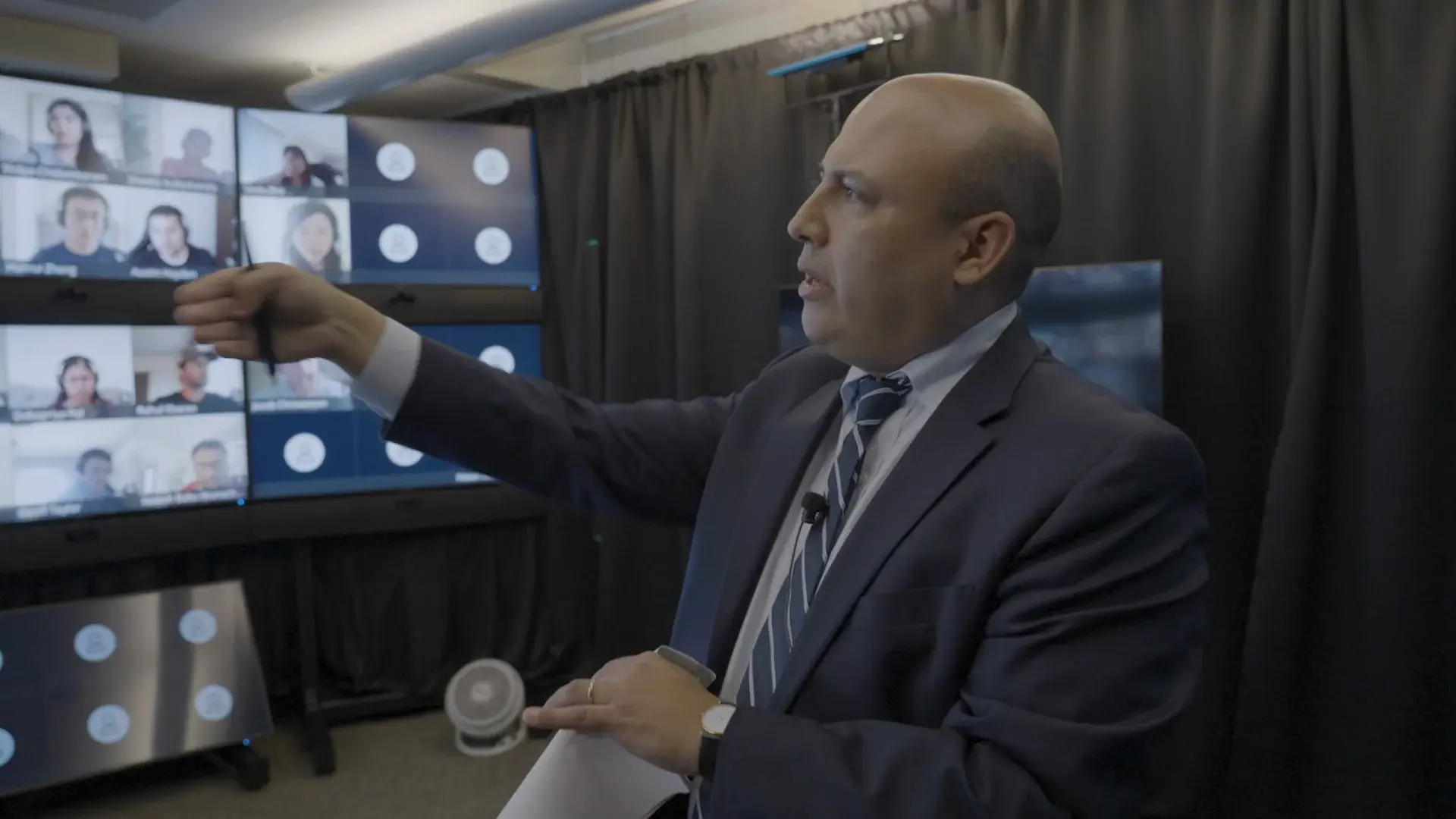
The Virtual Classroom Experience
The part-time MBA program at Berkeley Haas is top-ranked for a reason. Our students benefit from the academic rigor, renowned faculty, and high achieving community that are part of all Berkeley MBA programs.

The Virtual Classroom
In this video, members of the inaugural Flex cohort share reasons why the innovative technology, immersive virtual classroom experience, and interactive learning environment sets Berkeley Haas apart.
Watching video: The Virtual Classroom
Shilpa Chidambaram:
I was expecting something like a Zoom meeting once again after day long of meetings.
Amanda Sultan:
I wondered to myself, are we going to be able to connect the same way that people in person have? And the answer is wholeheartedly, yes.
Marc Armbruster:
Haas has a long tradition of innovation. They're really pushing the envelope in terms of what an educational experience can be.
Prof. Jose Guajardo:
How to recreate the in classroom environment in the virtual world is really the main focus here. I think one of the great things in our virtual classroom, in particular, is that we can use multiple medias to try to generate that rich interactive environment.
Many of the things we could do in an actual classroom, you could actually replicate, or some of those do even better in the virtual world in a setting like the one we have here at Haas.
Tapan Shah:
So we have, initial videos of the lectures already pre-shot and available for us to go through before we enter into the class. So that gives an opportunity to grasp the concepts beforehand, and you make those concepts more concrete when you're in class and apply those concepts in real life case scenarios.
Emily Harmon:
It's really, really cool how much the school has invested in that technology.
Aidan Steele:
So we can all see each other's faces if we choose to. We can see the professor. We can see what the professor is writing, and we can switch focus between those perspectives in whatever way supports our learning experience the best.
Alecia Wall:
When I'm in class, I see the professor in front of me. They're standing. They're walking around. They're interacting with the whiteboard. They're able to cold call us.
So they keep us on our toes in that setting the way that they would in an in-person setting.
Prof. Guajardo:
If a student speaks, for example, we would hear directly from a specific direction. Right? So, we could interact with that student as if we were in class.
Shilpa:
So it's like, oh, I'm super, super involved in the discussion. And my professor really knows whether I'm engaged or not.
Prof. Guajardo:
We have a limited capacity in terms of units per unit of time.
Emily:
Having the chat function in the virtual classroom actually allows for more participation and more inclusion.
Aidan:
We can seek clarification from our peers without interrupting the flow of the class, or we can bring up additional points that weren't mentioned but are helpful. Multiple times, people have dropped links to references or articles in the chat window. You just can't replicate that experience in an in person setting.
Tapan:
The professor would have breakout rooms, which are like single click, and then you're distributed in a breakout room, which in person, I think, takes time.
Aidan:
The digital classroom is a phenomenal setup, and the Haas technology team is continually making improvements to it.
Shilpa:
The classroom experience is so immersive that it just feels like I'm going to Haas and sitting in the classroom.
Take the Next Step
Lorem ipsum dolor sit amet, consectetur adipiscing elit. Integer sed varius ante. Phasellus sit amet rhoncus mi. In vehicula dapibus lorem fermentum accumsan. Nulla et fermentum enim. Cras sit amet eros leo. Nam nec vehicula odio. Donec molestie congue pulvinar.